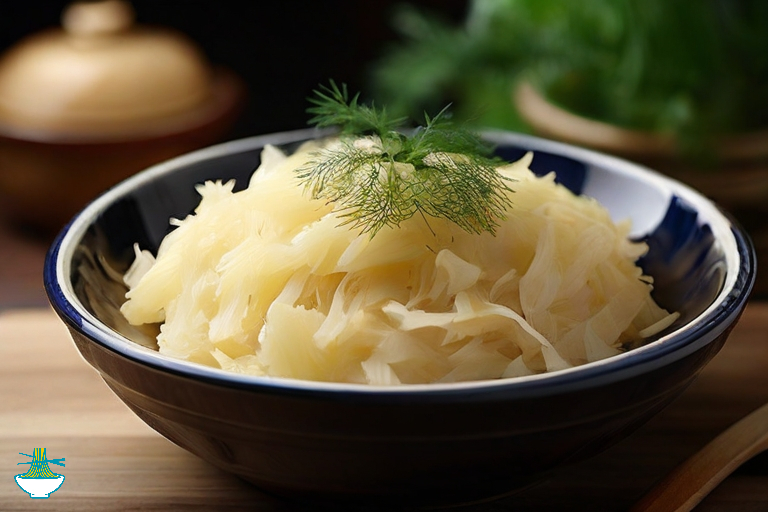Embark on a culinary journey to the picturesque Aland Islands as we unravel the secrets of a beloved Nordic delicacy – Aland Hapankaali. Rooted in tradition, this delectable fermented cabbage dish not only captures the essence of Scandinavian cuisine but also offers a delightful blend of flavors that dance on the palate.
Aland Hapankaali is more than just a dish; it's a culinary heritage passed down through generations. With its unique combination of crispiness and tangy goodness, this recipe holds a special place in the hearts of Aland Islanders. Join us as we delve into the art of preparing this iconic food, exploring the rich cultural tapestry that has shaped its creation and savoring the delightful tastes that make it a staple on Nordic dining tables. Get ready to immerse yourself in the magic of Aland Hapankaali – a dish that embodies the soul of the Aland Islands.
Here's a simple recipe for Aland Hapankaali, a delightful sauerkraut dish often served as a side:
Ingredients:
- 1 medium-sized green cabbage
- 1 tablespoon sea salt
- 1 teaspoon caraway seeds
- 1 juniper berry (optional)
- 1-2 apples, peeled and grated
- 2 tablespoons cranberries (optional, for sweetness)
- Sterilized glass jar with a tight-fitting lid
Instructions:
Prepare the Cabbage:
1-Remove any outer leaves from the cabbage that may be wilted or damaged.
2-Cut the cabbage in half and remove the core.
3-Finely shred the cabbage using a knife or a mandoline.
Massage with Salt:
1-Place the shredded cabbage in a large mixing bowl.
2-Sprinkle the sea salt over the cabbage.
3-With clean hands, massage and squeeze the cabbage for about 10-15 minutes until it starts releasing its juices. This helps break down the cell walls and initiates the fermentation process.
Add Flavors:Mix in caraway seeds, juniper berry (if using), grated apples, and cranberries.
Pack into Jar:Pack the cabbage mixture tightly into a sterilized glass jar, ensuring there are no air pockets.
Press Down:Use a clean, heavy object (like a small glass or a weight) to press the cabbage down. The goal is to keep the cabbage submerged in its own liquid.
Seal the Jar:Close the jar tightly with its lid. Ensure it's airtight.
Fermentation:Place the jar in a cool, dark place for about 1-2 weeks. Check the sauerkraut every few days, pressing it down if necessary.
Taste Test:After 1-2 weeks, taste the sauerkraut. If it has reached your desired level of tanginess, it's ready. If not, let it ferment for a few more days.
Store:Once ready, store the Aland Hapankaali in the refrigerator. The cold temperature will slow down the fermentation process.
Serve:Serve Aland Hapankaali as a delightful side dish, pairing its tangy crunch with various main courses.
Enjoy your homemade Aland Hapankaali, a flavorful nod to Nordic culinary traditions!
Nutritional Values:
Here are approximate nutritional values for the individual ingredients in the Aland Hapankaali recipe:
Medium-sized green cabbage (about 2 lbs):
- Calories: 110
- Carbohydrates: 26g
- Fiber: 12g
- Protein: 5g
- Fat: 0.6g
- Vitamin C: 195% DV
- Vitamin K: 300% DV
Benefits: Rich in fiber, vitamins C and K. Supports digestion, boosts immune function, and contributes to bone health.
Sea salt (1 tablespoon):
- Calories: 0
- Sodium: 5750mg (varies based on the brand and type of sea salt)
Benefits: Provides essential minerals, aids in electrolyte balance, and enhances flavor. However, should be used in moderation.
Caraway seeds (1 teaspoon):
- Calories: 6
- Carbohydrates: 1.3g
- Fiber: 0.9g
- Protein: 0.2g
- Fat: 0.4g
Benefits: Contains antioxidants, aids digestion, and may help alleviate bloating and indigestion.
Juniper berry (1 berry, optional):
- Calories: 1
- Carbohydrates: 0.2g
- Fiber: 0.1g
- Protein: 0.1g
- Fat: 0g
Benefits: Offers antioxidants and potential anti-inflammatory properties. Adds a unique flavor, but use sparingly due to its strong taste.
Apples (1 medium-sized apple, peeled and grated):
- Calories: 95
- Carbohydrates: 25g
- Fiber: 4g
- Protein: 0.5g
- Fat: 0.3g
- Vitamin C: 14% DV
Benefits: High in fiber and vitamin C. Supports heart health, aids digestion, and provides a natural sweetness to the sauerkraut.
Cranberries (2 tablespoons, dried and sweetened):
- Calories: 33
- Carbohydrates: 8.6g
- Fiber: 1.6g
- Sugars: 5g
- Vitamin C: 2% DV
Benefits: Rich in antioxidants, may support urinary tract health, and adds a sweet and tart flavor to the dish.
Sterilized glass jar with a tight-fitting lid:
- No significant nutritional value (used for storage).
Benefits: Essential for the fermentation process, allowing beneficial bacteria to thrive and creating a safe environment for the sauerkraut to develop its unique taste and texture.
Keep in mind that these values are approximate and can vary based on the specific brands and varieties of ingredients you use. Additionally, the fermentation process may alter some nutritional aspects, such as increasing certain vitamins and promoting gut-friendly probiotics.


Comments